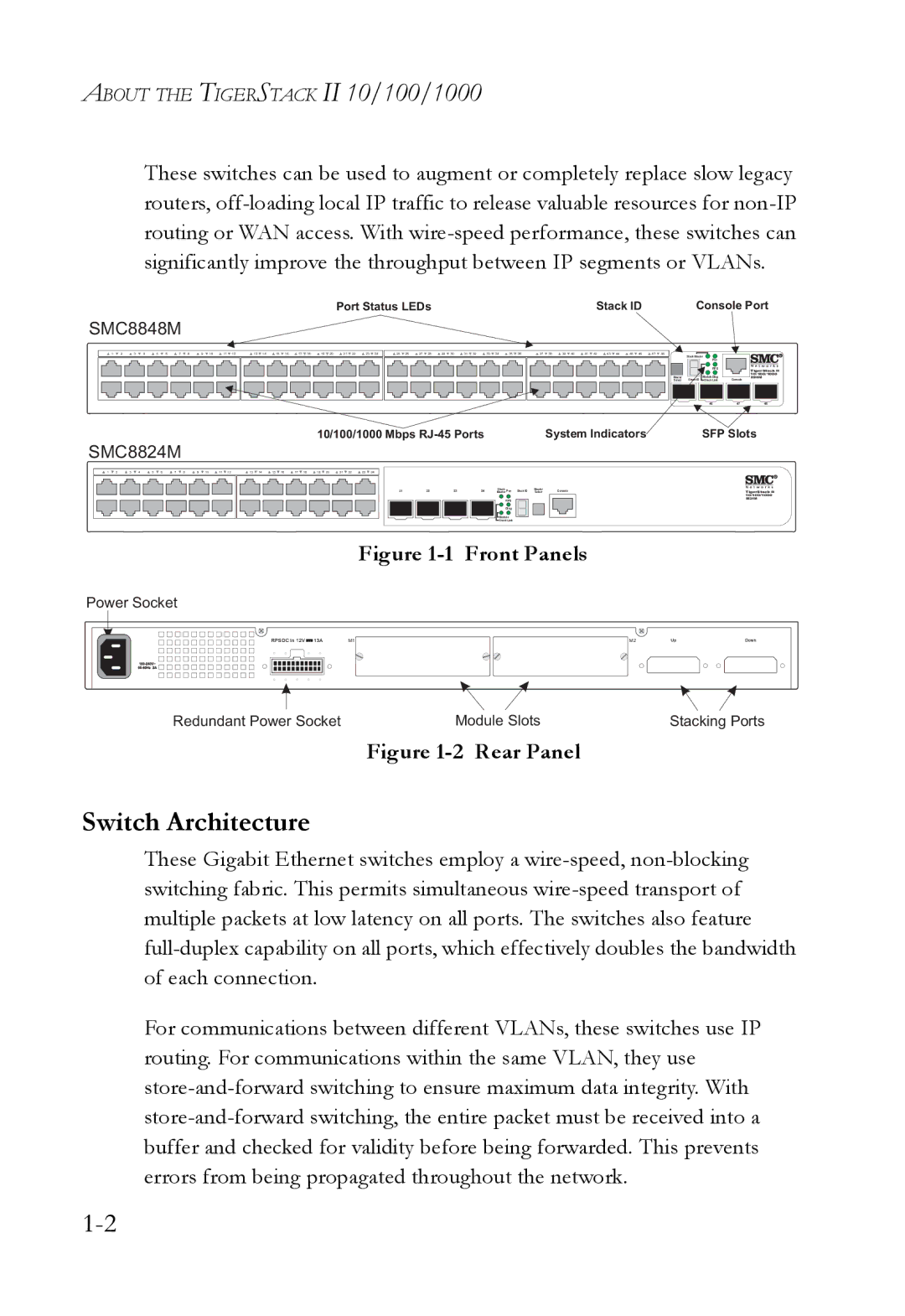
ABOUT THE TIGERSTACK II 10/100/1000
These switches can be used to augment or completely replace slow legacy routers,
Port Status LEDs | Stack ID | Console Port |
SMC8848M
1 | 2 | 3 | 4 | 5 | 6 | 7 | 8 | 9 | 10 | 11 | 12 | 13 | 14 | 15 | 16 | 17 | 18 | 19 | 20 | 21 | 22 | 23 | 24 | 25 | 26 | 27 | 28 | 29 | 30 | 31 | 32 | 33 | 34 | 35 | 36 | 37 | 38 | 39 | 40 | 41 | 42 | 43 | 44 | 45 | 46 | 47 | 48 |
Stack Master
|
| Pwr |
|
|
| RPS |
|
Master | Stack ID | Module Diag | Console |
Select | Stack Link | ||
| 45 | 46 | 47 |
TigerStack II 10/100/1000 8848M
48
10/100/1000 Mbps | System Indicators | SFP Slots |
SMC8824M
1 | 2 | 3 | 4 | 5 | 6 | 7 | 8 | 9 | 10 | 11 | 12 | 13 | 14 | 15 | 16 | 17 | 18 | 19 | 20 | 21 | 22 | 23 | 24 |
21 | 22 | 23 | 24 | Stack | Pwr | Stack ID | Master | Console |
Master | Select | |||||||
|
|
|
|
| RPS |
|
|
|
|
|
|
|
| Diag |
|
|
|
|
|
|
| Module |
|
|
| |
|
|
|
| Stack Link |
|
|
| |
TigerStack II 10/100/1000 8824M
Figure 1-1 Front Panels
Power Socket
M1 | M2 |
Redundant Power Socket | Module Slots | Stacking Ports |
Figure 1-2 Rear Panel
Switch Architecture
These Gigabit Ethernet switches employ a
For communications between different VLANs, these switches use IP routing. For communications within the same VLAN, they use
